Whether you have an indoor or an outdoor cat, she is prone to internal parasites like roundworms, hookworms and tapeworms. So how do you know if your cat has worms? It has been observed that kittens pick up worms from their mother’s milk. The mother might have picked up the worms while accidentally eating worm eggs or eating vermin-infested with worms. Since it is very easy for kitties to acquire worms, it is important to learn about the symptoms of these worms in cats.
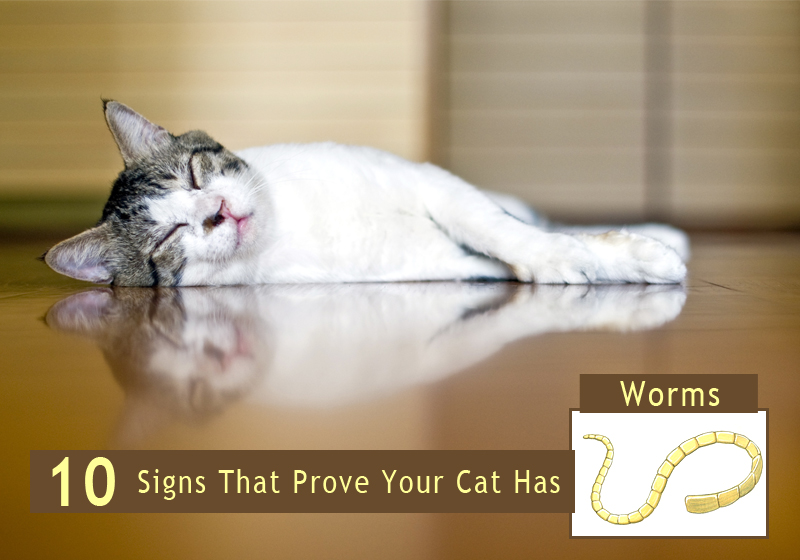
Once you are aware of the symptoms, you can take the help of your veterinarian to resolve the problem by administering deworming treatments such as Profender, Drontal, and many more. But first let us look at some of the symptoms of worms in cats:
How To Check Cats For Worms: Symptoms Of Worms In Cat
1. A Drastic Change On the Cat’s Coat
Normally a cat’s fur is shiny, but if she has acquired worms then her coat will appear dull or flat looking. It can even be due to dehydration or poor absorption of nutrients due to parasitic infection.

2. Closely Look At The Cat’s Gums
A healthy cat will have pink gums just like us, humans. But if she has pale or white gums, it can be anemic due to parasitic infection. To check her gums, make her sit in your lap and then softly hold her head in your hands. Check her under the jaws and behind the ears. Lift the flap of your kitty’s upper lip with the aid of your fingers so that the gums above the teeth of the cat are visible. If the gums are pale, then take her to the veterinarian as soon as possible.
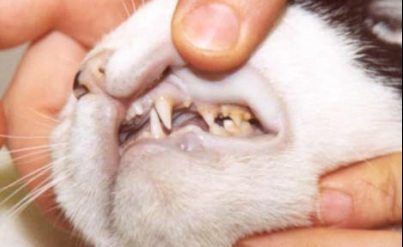
3. Analyze The Feces Of Your Kitty
If you have a litter box for your kitty it is very easy to keep a check on her feces. Check for these symptoms:
- If you see dark, tarry stool it can be due to blood loss from the body part where the hookworms attached themselves to the walls of the intestine.
- If your kitty has diarrhea it can be due to worms that reside in the guts of the kitty and interfere with the digestion.
- If the diarrhea continues for more than a day or if you see fresh blood or dark, tarry stool, then immediately seek the help of your veterinarian.

4. Check Whether Your Kitty Is Vomiting
Vomiting is a common symptom in cats. But if it occurs frequently, it can be due to worms or some other health problems, hence seek veterinarian help at the earliest. These worms cause vomiting in felines through two ways: either by blocking the outflow of the stomach or by irritating the stomach lining.
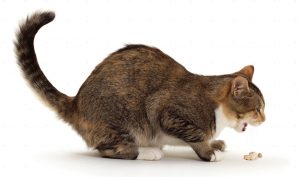
5. Check How Much Your Feline Is Eating
Due to worms, cats do not eat well due to inflammation of the bowel lining, stomach ache and physical presence of worms in the bowel system of the feline.

6. Changes In The Shape Of Your Cat’s Body
Due to the presence of lots of worms, certain cats develop a potbelly leading to the swollen abdominal area. Just like vomiting, it is very common in felines as it can occur due to various reasons and so it is better to take your kitty to the veterinarian for determining the cause.
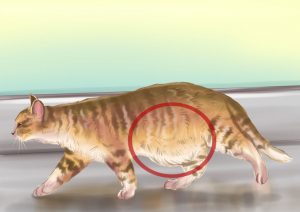
7. Lethargy in Cat
Worms inside your cat’s body steal nutrition from her bowel system which makes her feel lethargic, listless and lacking in energy. If you find any of the changes in the cat’s energy like a sudden reduction in energy or playfulness, get in touch with your veterinarian as soon as possible.

8. Check For Intestinal Parasites In Your Cat
Wear disposable gloves and use a tool like a Popsicle stick to determine feces in the litter box as an early sign of parasites:
- Tapeworms might leave egg packets stuck on the surface of the stool. It might seem like a sesame or cucumber seed, which might wriggle and move.
- These tapeworms are flat, cream-colored worms that can reach approximately 60 centimeters in length.
- You cannot see roundworm eggs with naked eyes, but these worms do pass out in feces or are vomited by the cat. They look like spaghetti: long and smooth and may have the same diameter as a strand of pasta. An adult roundworm is 3 to 6 inches long.
- Hookworm eggs are too small to see. An adult hookworm measures 2 to 3 millimeters in length and so is very difficult to detect.
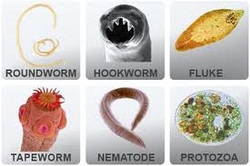
9. Look At Your Cat’s Anus
It has been observed that tapeworm eggs migrate to the cat’s anus and stick to their fur. So if you see creamy-white egg packets resembling sesame seeds clinging to the cat’s fur it can be due to the worms.

10. Look At Your Kitty’s Bedding & Favorite Spots
Generally egg packets get stuck in places where the kitty spends most of her time like bedding or soft furniture. Hence, scrutinize these areas if you suspect worms in your cat.

If you suspect worms in your feline, rush to your veterinarian immediately as he/she is the best person to take adequate measures to treat your furry friend. Take the treatment as suggested by him/her and soon your kitty would be back to her playful best.
